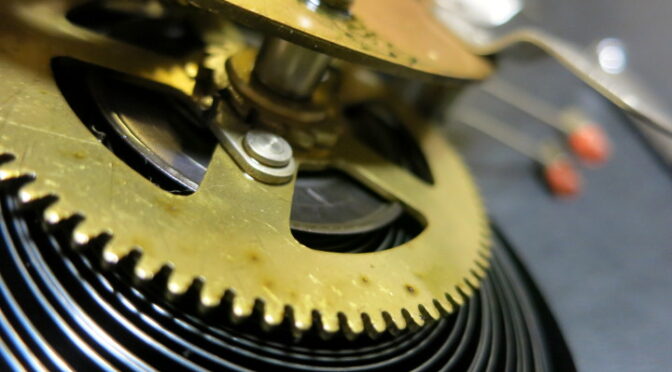In my previous post I explained how I got started on this strange path to clock repair. In this post I talk about the dangers, some videos, and my first clock repair tools.
The first thing I did was to remove my Goodwill clock’s movement from the case. This step is pretty easy: unscrew the nut holding the hands on, gently pull the hands off, unscrew the wood screws holding the face onto the clock and voila, there is the movement.
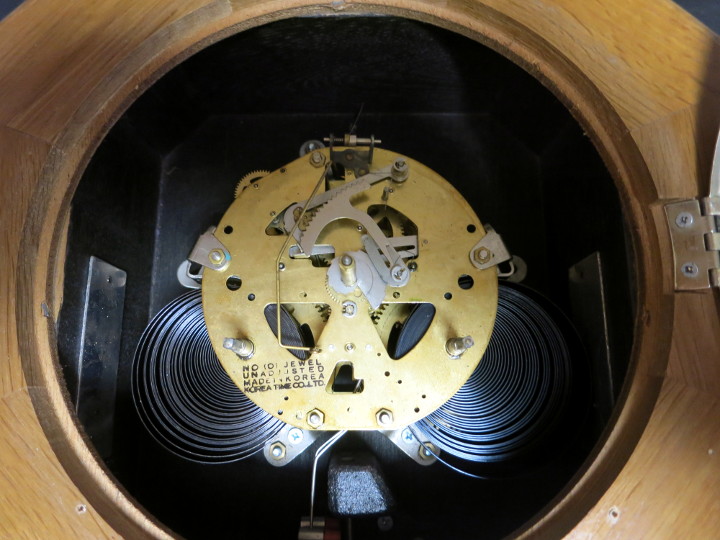
Since the pendulum was missing, I didn’t have to remove it. Next I unscrewed the 5 screws that fastened the movement to the back of the case, removed the movement and laid it on my work table.
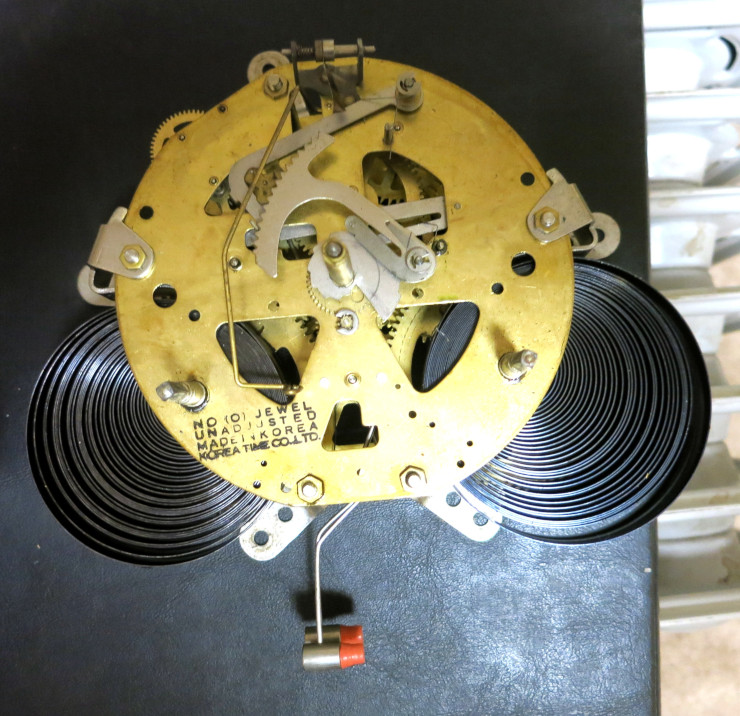
My first instinct was to release the tension on the springs, A BAD AND DANGEROUS IDEA. Using a screwdriver, I pulled the ‘click’ back that keeps the spring wound DON’T DO THAT.
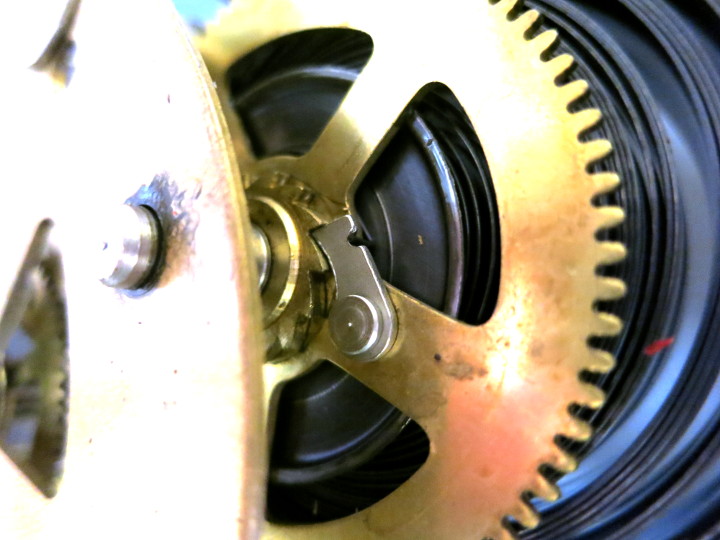
Immediately after I moved the Strike (gong) mainspring click out of place, the spring flew out of the clockwork with tremendous force. Luckily, my hands and face were out of the way. Unfortunately, I think I chipped some of the teeth of the ratchet as the spinning ratchet hit the click and stopped moving.
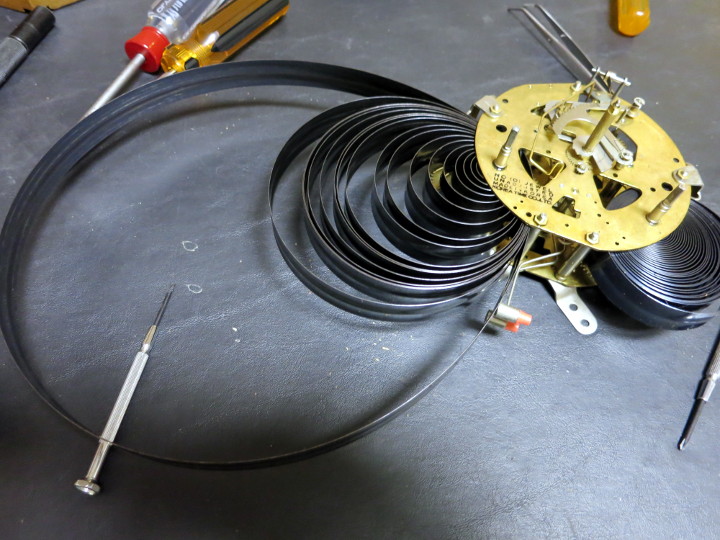
Only then did I find a couple of great videos showing how to safely handle mainsprings: Al Takatsch has a nice detailed video showing how to safely release the power of the mainspring, using just a few tools.
Inspired – and cautioned – by the videos, I ordered the minimal tools required: a set of Mainspring Clamps, and a Let Down Set. I decided to put off buying the $250 Ollie Baker style Mainspring Winder I’d seen in several videos (Update: I later bought the mainspring winder – now I call it an essential piece of safety equipment).
The mainspring clamp of the right size holds the spring as you unwind it, safely transferring the power of the spring to the clamp, from the shaft of the Great Wheel the spring is attached to. The Let Down and Key is just a smooth winding key that lets you safely unwind the mainspring in a controlled way, as you let the handle slip bit by bit in your hand.
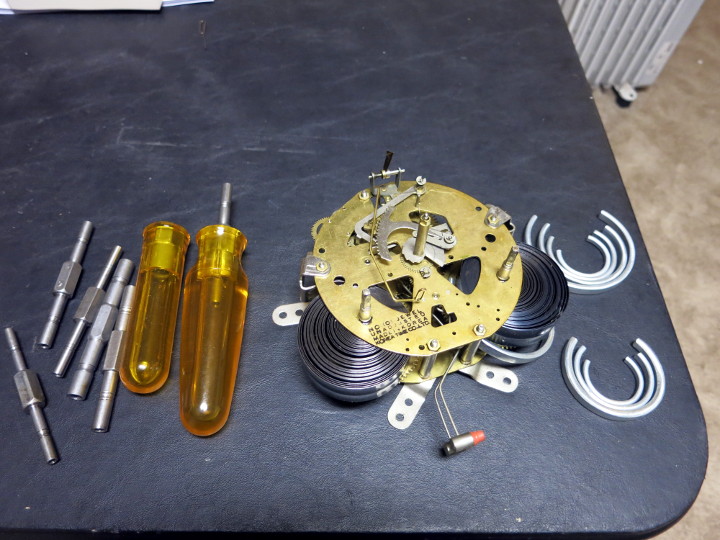
Meanwhile, I looked up a little more about the clock I’d bought, and found an NAWCC thread talking about the dangers of 30-day clocks. It turns out that a 30-day mainspring is far stronger than an 8-day or 30-hour mainspring. There is a lot of power pent up in that little band of metal. Several clock repairers said they refuse to work on 30-day clocks because of that power. They called it “a time bomb waiting to go off.” One danger is that if you are using a normal key (with wide ‘wings’ to hold onto) to wind a 30-day clock, and the ratchet mechanism breaks, the key will spin in your hand with enough power to seriously cut you, or even break a finger.
YEOW!
So my plan immediately changed from: dismantle, clean, and reassemble the clock to get it running, to: remove the mainsprings, never put them back in the clock, and use the clock to practice disassembly, cleaning, and assembly.
While waiting for my tools to arrive, I watched good overviews on the process of overhauling a clock: that is, disassembling it, cleaning all the parts, repairing worn pivot holes, reassembling, oiling, and adjusting the clock.
- Bracken ClockWorks has a nice set of videos detailing the overhaul process. I like this set of videos because he shows each of the steps in detail as he works on the clock. Unfortunately, he hasn’t yet posted the reassembly of the clock.
- dperry428 has a Seth Thomas repair video that I like because he just turns on the camera and goes to it. It’s also good to see how different people repair similar clocks.
- Lost Learning has an unattributed video that unfortunately looks like a bootleg VHS tape, but shows how to do clock repair on a budget.
In my next post I disassemble – or maybe destroy – the clock.

